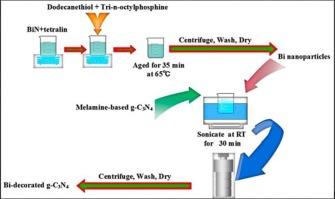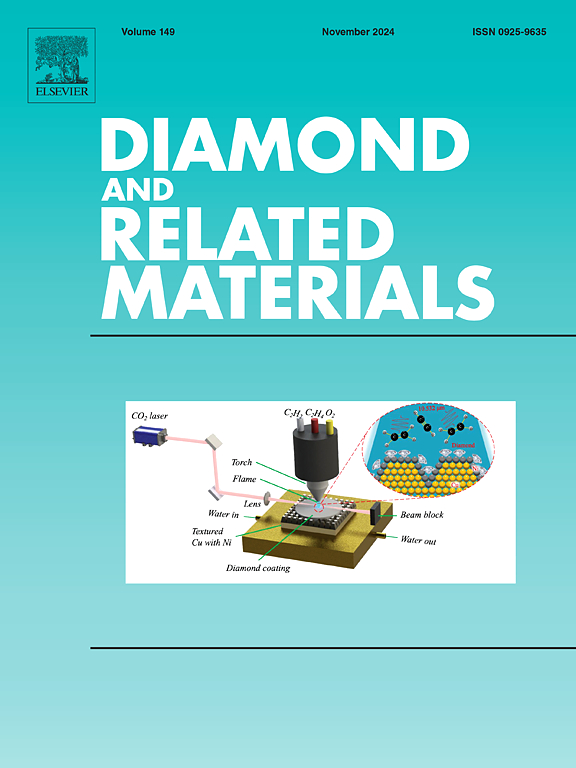揭开用于电化学传感器的双装饰氮化石墨碳纳米结构的神秘面纱
IF 5.1
3区 材料科学
Q2 MATERIALS SCIENCE, COATINGS & FILMS
引用次数: 0
摘要
开发灵敏稳定的探针来监测人体生物流体中尼鲁他胺等抗癌药物的准确定量,对于有效监测和治疗癌症至关重要。本研究旨在合成掺铋氮化石墨纳米复合材料,作为测量尼鲁他胺的电化学探针。氮化石墨(g-C3N4)是通过简单的热诱导共聚制备的。然后,用铋(Bi)对 g-C3N4 层进行装饰,以提高 g-C3N4 与 Bi 之间形成界面的质量,从而提高 Bi-decorated g-C3N4 系统的电化学活性。通过 FESEM、XRD、TEM、EDX、FTIR、XPS、拉曼、BET、UV-Vis 和 PL 等方法对合成的铋装饰 g-C3N4 材料进行了研究,以确认 g-C3N4 材料成功地加入了铋。研究表明,使用掺杂了铋的 g-C3N4 作为电化学传感器,可以达到 0.38 ppb(0.0012 nM)的出色检测限。尼鲁他胺的检测线性动态范围为 5-160 ppb。值得注意的是,所开发的传感器具有良好的重现性,相对标准偏差值为 3.78%。在未来的研究中,应调查所开发的传感器在环境样品中灵敏和选择性地检测其他分子的潜力。此外,双装饰 g-C3N4/GCE 在 pH 值范围内对尼鲁他胺材料的探测显示出良好的灵敏度。本文章由计算机程序翻译,如有差异,请以英文原文为准。

Unveiling Bi-decorated graphitic carbon nitride nanostructures for electrochemical sensors
Developing sensitive and stable probes to monitor accurate quantification of anti-cancer drugs like nilutamide in human biofluids is critical for effective cancer monitoring and treatment. The current study aimed on synthesis bismuth-doped graphitic carbon nitride nanocomposite as an electrochemical probe for measuring nilutamide material. Graphitic carbon nitride (g-C3N4) was prepared via a simple thermally induced copolymerization. Then, the g-C3N4 layers were decorated with bismuth (Bi) to boost the quality of forming and interface between g-C3N4 and Bi, therefore improving the electrochemical activity of the Bi-decorated g-C3N4 system. The synthesized Bi-decorated g-C3N4 material was studied by FESEM, XRD, TEM, EDX, FTIR, XPS, Raman, BET, UV–Vis and PL to confirm successful Bi incorporation of g-C3N4 material. The investigations revealed that an excellent detection limit of 0.38 ppb (0.0012 nM) can be achieved using Bi-doped g-C3N4 as an electrochemical sensor. A linear dynamic range of 5–160 ppb was observed for the sensing of nilutamide. Notably, the developed sensor showed good reproducibility with a relative standard deviation value of 3.78 %. In the future research, the potential of developed sensor developed to sensitively and selectively other molecules should be investigated in environmental samples. In addition, the Bi-decorated g-C3N4/GCE showed good sensitivity in a pH range to probe the nilutamide material.
求助全文
通过发布文献求助,成功后即可免费获取论文全文。
去求助
来源期刊

Diamond and Related Materials
工程技术-材料科学:综合
CiteScore
6.00
自引率
14.60%
发文量
702
审稿时长
2.1 months
期刊介绍:
DRM is a leading international journal that publishes new fundamental and applied research on all forms of diamond, the integration of diamond with other advanced materials and development of technologies exploiting diamond. The synthesis, characterization and processing of single crystal diamond, polycrystalline films, nanodiamond powders and heterostructures with other advanced materials are encouraged topics for technical and review articles. In addition to diamond, the journal publishes manuscripts on the synthesis, characterization and application of other related materials including diamond-like carbons, carbon nanotubes, graphene, and boron and carbon nitrides. Articles are sought on the chemical functionalization of diamond and related materials as well as their use in electrochemistry, energy storage and conversion, chemical and biological sensing, imaging, thermal management, photonic and quantum applications, electron emission and electronic devices.
The International Conference on Diamond and Carbon Materials has evolved into the largest and most well attended forum in the field of diamond, providing a forum to showcase the latest results in the science and technology of diamond and other carbon materials such as carbon nanotubes, graphene, and diamond-like carbon. Run annually in association with Diamond and Related Materials the conference provides junior and established researchers the opportunity to exchange the latest results ranging from fundamental physical and chemical concepts to applied research focusing on the next generation carbon-based devices.
 求助内容:
求助内容: 应助结果提醒方式:
应助结果提醒方式:


